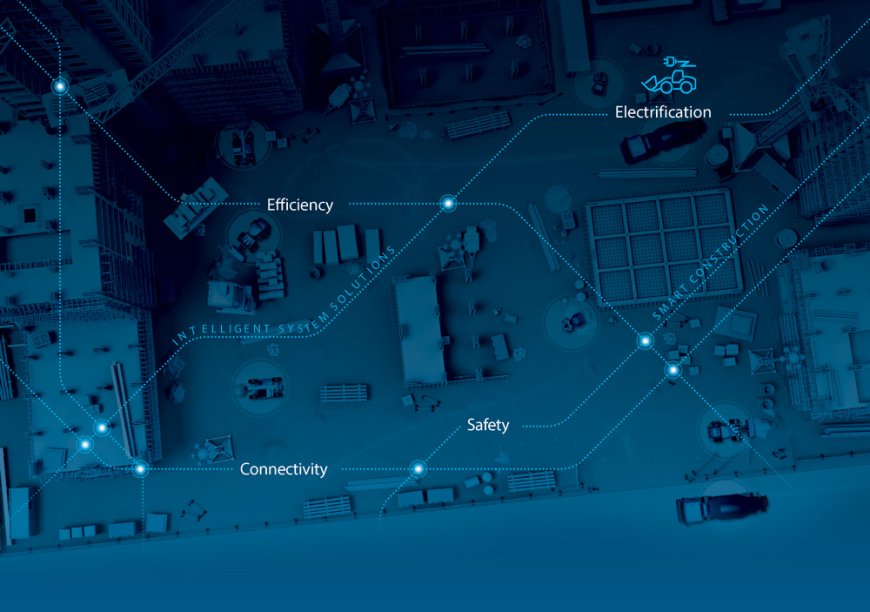DIGITALISATION of CONSTRUCTION MACHINERY It is the result that counts
Whereas other industries have already adopted digital processes, selling methods (e-commerce), service delivery etc. construction has so far remained an industry characterised by manual processes and traditional methods.

Rajesh Nath
Managing Director, VDMA India
Whereas other industries have already adopted digital processes, selling methods (e-commerce), service delivery etc. construction has so far remained an industry characterised by manual processes and traditional methods. Some aspects of construction are being digitalised faster than others, for example the design phase, for which Computer Aided Design (CAD) has been used for many years and is increasingly being replaced by Building Information Modelling (BIM).
One of the tasks for the future is the digitalization of the construction site. Although this is currently on everyone’s lips, it has so far made little impact in the real world. A digital construction site is the vision of a fully digitalized, highly automated and customizable construction site.
Construction 4.0
The construction industry is undergoing a significant transformation, which includes revolutionary new approaches such as digitalisation and automation. This “fourth industrial revolution”, known for all EU industry as “Industry 4.0”, is known in our sector as Construction 4.0.
The big change brought by Construction 4.0 seems to revolve around a decentralized connection between the physical space and the cyberspace via ubiquitous connectivity. In the construction industry, the connection between these two worlds already exists through technological approaches. For example, it is possible to have complete numerical models of a construction project and even to create a bidirectional link between the construction site and these models. However, the presence of the human is necessary to maintain and manage this link. With the advent of Construction 4.0, a number of technologies will gradually replace this role of the human, so as to reduce human intervention and to tend towards a decentralized fusion between physical reality and its representation in the cyberspace.
Associated Technologies
While the basis of Industry 4.0 in many industries relies on the technologies which enable ubiquitous connectivity and real-time decentralized decision-making, Construction 4.0 is not limited to those technologies but rather based on a broader spectrum, with the main ones being the Internet of Things, Digital Twin, additive manufacturing, cloud computing, Cyber-Physical Systems (CPS) and BIM.
The great promise of the Construction 4.0 revolution lies in the almost complete automation of the entire project life cycle. This automation involves the use of digital twins at every step, from planning to operation, including design and construction. In the design phase, the increased use of BIM models as digital twins makes it possible to question them through simulations of the physical product (the building, for example), its constructability and profitability options (4D, 5D), and its sustainability (e.g., energy analysis).
In the construction phase, BIM models continue to serve as digital twins, but are complemented by other technologies to automate their connection to the reality of the construction site. These technologies are mainly Cyber-Physical Production Systems (CPPS), including sensors, drones, embedded robotics and monitoring systems. In the operational phase, the BIM and the IoT, together with other CPS sensors, make it possible to monitor the performance of the facility and to set up an effective system for preventive maintenance management.
Way Forward
Digitization is and will be the topic that will occupy companies in the coming years. Construction machinery and building material plants have also recognised this and took the first step a little over a year ago to tackle this topic in a regulated and organised manner within the industry. In order to solve the upcoming problems and shape this process, VDMA has set up a working group entitled “Machines in Construction 4.0” (MiC 4.0)
In the MiC 4.0 working group, manufacturers and operators jointly developed an identical interpretation of data content so that construction machinery can “communicate” with a uniform understanding in future, regardless of the manufacturer. MiC 4.0 is open to all who wish to participate in this process. Complicated regulations and requirements at national, EU and international level, standardisation, machinery directive, machine safety, cybersecurity and environmental legislation require companies as well as associations to cooperate more intensively.
The construction machinery would have to meet the requirements with which the building contractors are confronted. These include legal regulations, occupational safety, health, and environmental protection. The operators are forced to act economically and legally sound in the construction market. The machines and equipment are tools to achieve these goals. An intensive cooperation between OEMs and construction companies, as it is currently taking place in the MiC 4.0 working group, is essential.
Hits: 7








